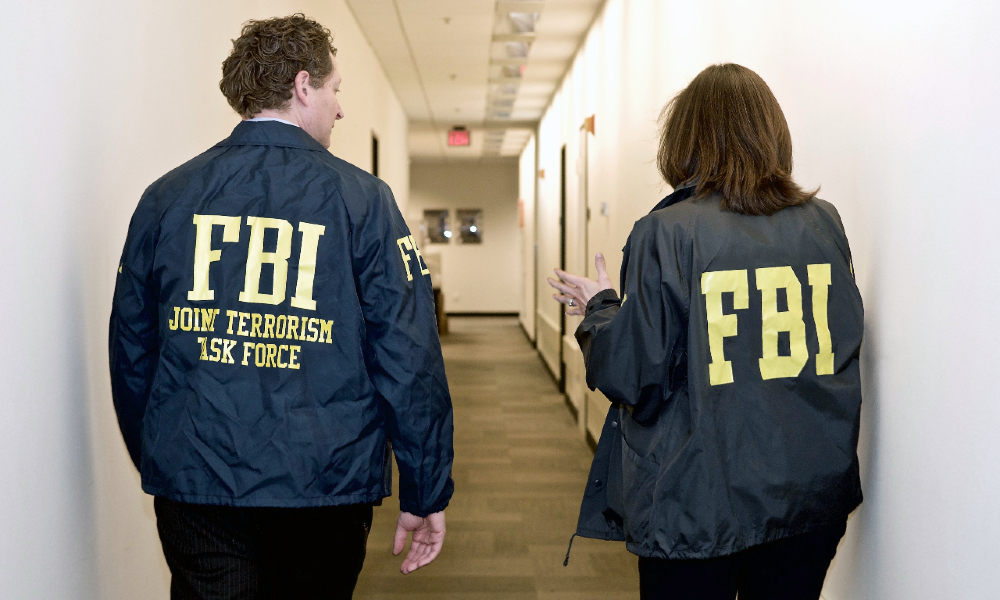The Kids Are Not Alright

Published by The Lawfare Institute
in Cooperation With

Editor’s Note: Youth involvement in extremism has long been a problem, but it appears to be growing worse. The National Counterterrorism Innovation, Technology, and Education Center’s Seamus Hughes argues that the current U.S. approach to this problem is scattershot, with confused policies that limit an effective response.
Daniel Byman
***
On Aug. 7, 2023, FBI agents watched as a 17-year-old Philadelphia teenager purportedly bought materials to make an improvised explosive device. Four days later, an FBI SWAT team arrested him. The involvement of a minor in terrorism plotting is part of a concerning trend fueled in part by social media echo chambers that encourage polarization and a tide of grievances arising from events overseas, including the Oct. 7, 2023, terrorist attack on Israel and the country’s military response to it. Law enforcement officials have been talking about the issue consistently in recent months. The FBI’s assistant director for counterterrorism, David Scott, publicly raised alarms about the bureau having terrorism cases of individuals “as young as 15.” Despite the bureau’s involvement in the Philadelphia takedown, the teen’s criminal prosecution was not a federal one; instead it is being led by the local district attorney.
The case, one of many, demonstrates the shortcomings of the U.S. government’s focus on disrupting plots and breaking up terrorist organizing when it is applied to minors exhibiting extremist sympathies. On Oct. 8, in the United Kingdom, the head of MI5 stated that one in eight of their ongoing terrorism investigations involve a minor, a threefold rise in the past three years. A few hours later in the United States, the FBI announced that it had arrested an Afghan national in Oklahoma who was allegedly plotting with a minor to commit an attack on Election Day in the name of the Islamic State. Teenagers might be particularly susceptible to radicalization, for example, through social media, but they are also good candidates for diversion programs that could prevent an excessive sentence and lifetime stigma. U.S. policymakers and law enforcement officials can take steps to tailor their approach for these cases, preventing extremist violence while also recognizing that minors involved in plots are sometimes confused kids capable of changing.
Concerns about youth mobilization to extremist violence are prevalent in Europe, as intelligence officials in countries such as France and Germany are increasingly breaking up foreign terrorist organization-inspired plots involving teenagers. In the age of a larger and larger cauldron of extremist threats, authorities say aspiring terrorists are getting younger and younger. The simple fact is that law enforcement agencies don’t have a policy answer for it.
The U.S. federal legal structure severely limits the ability of federal prosecutors to bring material support to terrorism charges against minors. That statute, which comes with a recommended sentence of 20 years and a lifetime albatross of being a convicted terrorist, is rightly seen by many as an approach that is too aggressive for juveniles drawn to extremism. Interviews with FBI agents around the country reveal a recurring theme: They feel they can’t arrest their way out of this problem, and, even if they could, they didn’t join the counterterrorism section of the FBI to lock up confused kids for decades.
However, the story of counterterrorism in the United States is steeped in the use of criminal charges to break up plots and protect the public. Such efforts are one of the prime reasons that the United States has been able to prevent hotspots of radicalization from forming in the country. But what happens when that tool is largely off the table? In the coming year, the United States will be forced to find out. But instead of asking individual field offices to put together a convoluted and one-off disruption approach for each juvenile suspect, policymakers can instead use this moment to create lasting structures that address the issue in a systematic way.
As it stands now, the approach to handling minors drawn to extremism has been scattershot, to say the least. In some cases, like the one in Philadelphia, federal law enforcement will work the investigation but ultimately kick it to a state-level prosecutor. The end result is the same, a minor in prison, albeit without the lengthy federal sentence but still with a rap sheet. In other cases, they’ll alert the child’s parents to their concerns about the teen’s descent into the extremist rabbit hole and hope the family steps in to stem the radicalization. But parents are ill equipped to both know and counter the intricacies of specific extremist ideologies, be they incels or the Islamic State. As has been demonstrated by some school shooting tragedies, simply alerting a parent is sometimes not enough.
There won’t be simple solutions to address this problem, but policymakers and senior officials can make it easier for agents in the field to understand and identify what additional options are available.
Law enforcement in the field would benefit from explicit guidance and recommendations from leadership at the Department of Justice and the FBI on how to handle terrorism investigations involving minors. There should be a vetted and clear guideline of sorts on how to approach these types of cases, similar to the concrete steps, explicit protections on civil liberties, and timeline for completion outlined when opening an adult terrorism investigation. It should include suggestions for nongovernmental resources that could be used instead of an arrest and areas within government to get expertise on non-law enforcement preventive measures.
Depending on the number of open terrorism cases involving minors, a mandated lead within the Justice Department and FBI may be needed to review ongoing cases and provide potential alternative approaches for field offices. The Justice Department could, as the default position, decline to encourage state-level prosecution for federal terrorism investigations if the minor suspect agrees to enter an intervention and diversion program, such as the ones currently being used by the department’s DEEP pilot project.
Barring dedicated and systemic action, law enforcement is left with the status quo of scattershot approaches to the concerning question of what to do with baby-faced aspiring terrorists. In the meantime, the Philadelphia district attorney just announced that the purported bomb-building teen, who authorities say was targeting a Pride parade on behalf of an Islamic State affiliate, will now be tried as an adult.





